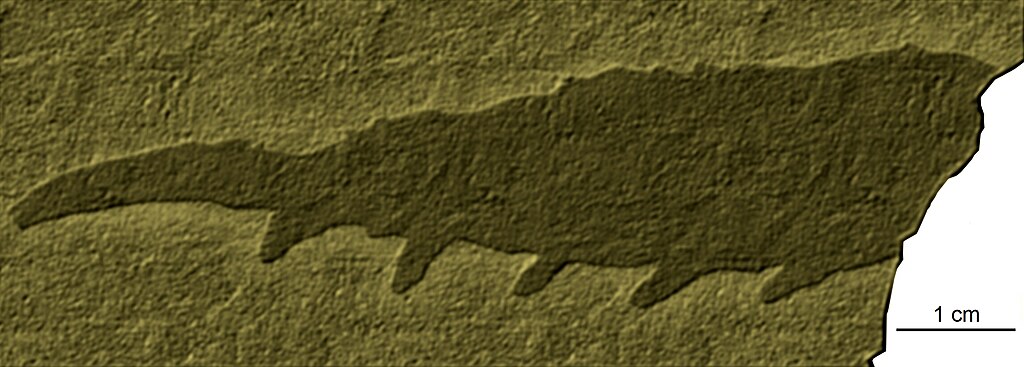In the vast prehistoric world where dinosaurs roamed, questions about their capabilities continue to fascinate scientists and enthusiasts alike. Among these questions, the ability of dinosaurs to navigate water environments remains particularly intriguing. For decades, paleontologists have pieced together evidence from fossilized remains, studying bone structure and anatomical features for clues about aquatic abilities. However, a relatively newer and revealing source of information has emerged: fossil trackways preserved in ancient sediments. These preserved footprints offer direct evidence of dinosaur behavior, including their interactions with water environments. By examining these tracks alongside skeletal remains, scientists have begun painting a more complete picture of dinosaurs’ swimming capabilities and aquatic behaviors.
The Challenge of Identifying Swimming Behavior

Determining whether dinosaurs could swim presents unique challenges for paleontologists. Unlike modern animals that can be directly observed, dinosaur behavior must be inferred from fossilized evidence left millions of years ago. Skeletal anatomy provides some clues, but doesn’t definitively indicate swimming ability. Many terrestrial animals today can swim despite not having specialized adaptations for aquatic environments. Moreover, fossilized remains typically don’t preserve soft tissues like webbed feet or skin flaps that might have aided in swimming. This is why trace fossils—particularly trackways showing interaction with water—have become invaluable in understanding dinosaur swimming capabilities.
Types of Water-Related Dinosaur Tracks

Paleontologists have identified several distinctive types of tracks that indicate dinosaur interactions with water environments. Swim traces, characterized by scratch marks or claw impressions in sediment, suggest dinosaurs were paddling through water deep enough that they weren’t walking on the bottom. Partial footprints, where only toe impressions are visible, often indicate a dinosaur walking through progressively deeper water until it began to float. Transitional tracks show the progression from full footprints to swim traces as a dinosaur moved from shallow to deeper water. “Punting tracks” reveal a distinctive pattern where dinosaurs pushed off the bottom while partially buoyant. Each of these track types provides valuable information about how different dinosaur species navigated aquatic environments.
The Infamous “Swimming Brontosaurus” Controversy

One of paleontology’s most famous misconceptions involved sauropods like Brontosaurus (now Apatosaurus) and their supposed aquatic lifestyle. For much of the 20th century, popular depictions showed these massive dinosaurs submerged in water, with only their heads above the surface. This interpretation suggested their massive bodies were too heavy to support on land and needed water’s buoyancy for support. However, modern research has thoroughly debunked this notion. Skeletal studies revealed sauropods had specialized weight-bearing adaptations for terrestrial life. Additionally, the absence of clear sauropod swim traces in the fossil record contradicts the idea they were primarily aquatic creatures. This controversy highlights how scientific understanding evolves as new evidence emerges and analytical techniques improve.
Theropod Swimming Traces from China

Among the most compelling evidence for swimming dinosaurs comes from Luoping County in southwestern China, where researchers discovered remarkable swim traces attributed to theropod dinosaurs. These tracks, dating to the Early Cretaceous period approximately 120 million years ago, show parallel scratch marks made by the claws of bipedal predatory dinosaurs. The pattern of these marks strongly suggests the animals were actively swimming, using their powerful hind limbs to propel themselves through water while their bodies remained buoyant. What makes these traces particularly significant is their length and consistency, indicating intentional, directed swimming rather than accidental water crossing. These Chinese swim traces have provided some of the strongest direct evidence that at least some theropod dinosaurs were capable and possibly frequent swimmers.
Hadrosaur Water Behaviors Revealed Through Tracks

Duck-billed dinosaurs (hadrosaurs) have yielded some of the most informative water-interaction tracks in the fossil record. Multiple trackway sites across North America show distinctive patterns where hadrosaur footprints transition from full prints to partial toe impressions and finally to swim traces. This progression strongly suggests these dinosaurs were comfortable moving from land into water and swimming when necessary. The Dakota Formation in the United States has preserved particularly detailed hadrosaur swim traces, showing how these herbivores pushed off from lake bottoms with their toes while their bodies floated. Interestingly, the abundance of these traces near ancient shorelines suggests hadrosaurs may have regularly entered water, possibly to feed on aquatic vegetation or to escape predators, behaviors reminiscent of modern hippos or moose.
Evidence for Swimming Sauropods

Despite debunking the idea that sauropods lived primarily in water, evidence suggests these massive dinosaurs could indeed swim when necessary. Rare trackways from sites in Europe and North America show distinctive patterns consistent with swimming behavior in these giant herbivores. These tracks typically appear as irregular series of claw marks, suggesting the animals were floating while occasionally touching the bottom with their feet. Biomechanical studies indicate sauropods would have been surprisingly buoyant despite their enormous size, as their bodies contained numerous air sacs similar to those in modern birds. Their long necks would have easily allowed them to keep their heads above water while swimming across rivers or lakes. This evidence suggests that while sauropods were primarily terrestrial, they were capable of swimming to navigate water barriers during migration or when searching for new feeding grounds.
Anatomical Adaptations for Swimming in Dinosaurs

While fossil tracks provide direct evidence of swimming behavior, skeletal anatomy offers complementary insights into dinosaurs’ aquatic capabilities. Some theropods like Spinosaurus possessed several features suggesting adaptation to aquatic environments, including dense bones for ballast, a sail-like structure that may have aided stability in water, and a crocodile-like snout suited for catching fish. Certain hadrosaurs had wide, flattened feet that could have functioned similarly to paddles when swimming. Interestingly, most dinosaurs lacked specialized swimming adaptations seen in fully aquatic reptiles like ichthyosaurs or plesiosaurs, indicating they were primarily terrestrial animals that swam occasionally rather than dedicated aquatic specialists. The exception appears to be Spinosaurus, which recent evidence suggests may have been more adapted for aquatic life than previously thought, with its dense bones and possibly paddle-like tail helping it pursue prey in water.
Comparing Dinosaur Swimming to Modern Animals

Understanding dinosaur swimming becomes clearer when compared to modern animals with similar body plans. Large bipedal dinosaurs likely swam in ways comparable to modern birds, using powerful leg kicks while their bodies remained buoyant, reminiscent of how ostriches swim today. Quadrupedal dinosaurs probably employed swimming methods similar to modern crocodilians or large mammals like elephants, using all four limbs in a paddling motion while keeping their heads above water. The fossil track evidence aligns remarkably well with these comparisons, showing scratch patterns consistent with these swimming styles. This comparative approach allows paleontologists to reasonably reconstruct swimming behaviors even without direct observation, providing a window into how dinosaurs navigated water environments in their ancient world.
Global Distribution of Dinosaur Swim Traces

Dinosaur swim traces have been discovered across multiple continents, suggesting swimming was a widespread behavior among various dinosaur groups. Significant finds include the Cameros Basin in Spain, where numerous swim traces from both theropod and ornithopod dinosaurs have been documented in ancient lake deposits. North American discoveries range from the Dakota Formation to sites in Wyoming and Colorado, preserving swim traces from hadrosaurs and theropods. Asian discoveries, particularly from China and Korea, have yielded some of the most perfectly preserved swimming traces, including the famous Luoping County theropod tracks. Australia and Africa have yielded fewer but still significant examples of dinosaur swim traces. This global distribution suggests swimming was not limited to certain dinosaur families or geographic regions but was instead a common capability across diverse dinosaur groups worldwide.
The Case of Spinosaurus: A True Swimming Dinosaur?

Spinosaurus aegyptiacus stands as paleontology’s most compelling candidate for a truly semi-aquatic dinosaur. Recent fossil discoveries and anatomical studies have revolutionized our understanding of this massive predator. Unlike other theropods, Spinosaurus possessed extraordinarily dense bones that would have aided in buoyancy control underwater, similar to adaptations seen in modern aquatic animals. Its crocodile-like snout and conical teeth appear perfectly adapted for catching slippery prey like fish. Most significantly, a 2020 study revealed Spinosaurus possessed a large, paddle-like tail capable of generating significant propulsive force in water—an adaptation not seen in other known theropods. While no definitive Spinosaurus swim traces have been identified, the anatomical evidence is so compelling that many paleontologists now consider it the first known swimming dinosaur specialized for an aquatic lifestyle, possibly hunting like a massive crocodilian in North African waterways.
How Scientists Interpret Ancient Swim Traces

Analyzing dinosaur swim traces requires sophisticated interpretive methods beyond simple observation. Scientists first establish that tracks were made in submerged conditions using sedimentological evidence, including ripple marks, mud cracks, and specific mineral formations that only occur in underwater environments. Next, they distinguish true swim traces from similar-looking marks that might be caused by other phenomena like tool marks or modern erosion. Researchers then analyze the pattern, depth, spacing, and orientation of the traces to reconstruct the animal’s movement through water. Advanced techniques like photogrammetry and 3D scanning allow for precise measurements and computer modeling of the swimming motion. Combining this trace evidence with skeletal anatomy and comparisons to modern animals creates a comprehensive picture of how the dinosaur was moving through water, including whether it was actively swimming, partially floating, or merely wading through shallow water.
Swimming as a Survival Adaptation

The ability to swim likely provided significant survival advantages for dinosaurs in their ancient ecosystems. Swimming would have enabled dinosaurs to cross water barriers like rivers and lakes, expanding their range and providing access to new food sources or breeding grounds. For predatory dinosaurs, swimming capabilities may have allowed them to pursue prey into water or ambush animals coming to drink. For herbivorous species, entering water could have provided refuge from terrestrial predators, much as modern elephants and hippos sometimes use water for protection. During droughts or seasonal changes, swimming ability would have been crucial for reaching remaining water sources. Evidence from multiple trackway sites suggests some dinosaur species regularly entered water, indicating swimming was not merely an emergency response but a routine behavior that enhanced their ecological adaptability and survival in changing environments throughout the Mesozoic era.
Future Directions in Dinosaur Swimming Research

The study of dinosaur swimming behaviors continues to evolve as new technologies and discoveries emerge. Advanced computer modeling now allows researchers to simulate dinosaur movement in water based on biomechanical principles, testing hypotheses about swimming capabilities. Ongoing excavations in ancient shoreline and riverbed environments worldwide hold promise for discovering additional swim traces, potentially from dinosaur groups not yet documented swimming. Increasingly sophisticated analysis of fossil bone density and internal structure may reveal previously unrecognized aquatic adaptations in certain dinosaur species. Comparisons with modern animals using experimental studies can further refine our understanding of how different body types perform in water. As these research avenues progress, our picture of dinosaur swimming behaviors will become increasingly detailed, providing deeper insights into how these magnificent creatures interacted with the watery portions of their ancient world.
Conclusion

The fossil track record has revolutionized our understanding of dinosaur swimming capabilities, providing direct evidence of how these animals interacted with water environments. From the paddling theropods of ancient China to the wading hadrosaurs of North America and the potentially more aquatic lifestyle of Spinosaurus, the evidence clearly demonstrates that many dinosaurs could and did swim when necessary. While most were terrestrial creatures that swam occasionally rather than specialized aquatic animals, their ability to navigate water environments likely played an important role in their ecological success throughout the Mesozoic era. As research techniques continue to advance and new fossil discoveries emerge, our understanding of dinosaur swimming behaviors will undoubtedly continue to evolve, adding new dimensions to our perception of how these fascinating creatures lived in their ancient world.



